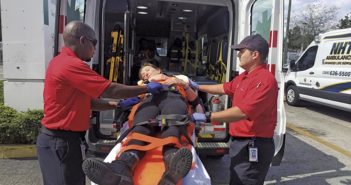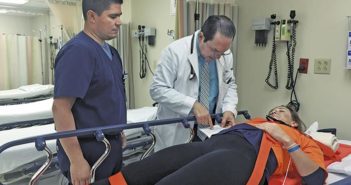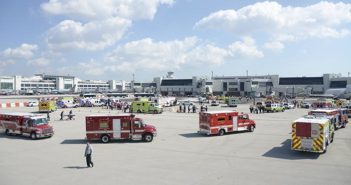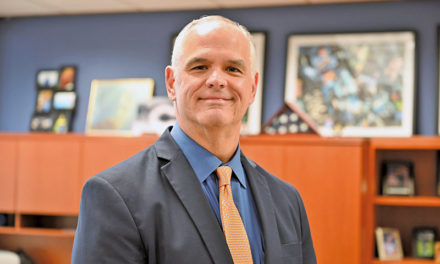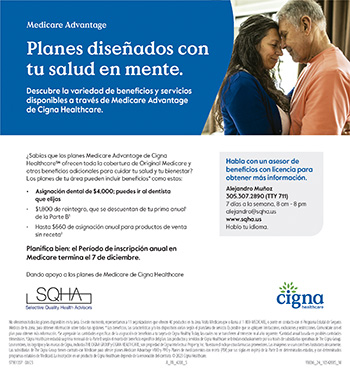Cerca de 200 personas participaron en el ejercicio que procura asegurar el más alto nivel de preparación ante la eventualidad de accidentes, actos de violencia o terrorismo MIAMI. El simulacro de un incidente mayor efectuado en el Aeropuerto Internacional de Miami (MIA) fue catalogado de exitoso, al lograr cumplir con el tiempo de respuesta acorde al promedio establecido por la agencia federal de aviación FAA, informó el Departamento de Aviación de Miami-Dade. El personal de apoyo, compuesto por más de 170 voluntarios, la Policía condal, los bomberos y varios centros médicos de emergencias, respondió con rapidez para garantizar la seguridad de los pasajeros y las operaciones del aeropuerto en un caso de emergencia similar.
Entre los centros médicos participantes fue el destacó Hialeah Hospital, ubicado a diez millas de la terminal aérea, al que fueron conducidos varios de los “supuestos accidentados” en el simulacro.
“La seguridad de los residentes y visitantes sigue siendo la mayor prioridad del Condado Miami-Dade, como lo demuestra el exitoso simulacro de emergencia que tuvimos en MIA”, señaló el alcalde Carlos A. Giménez,.“Formamos parte de estos simulacros para asegurarnos de que estamos preparados para controlar cualquier tipo de emergencia en el aeropuerto”, comentó el jefe de los bomberos, David Downey.
Luego el director de aviación, Emilio T. González, resaltó: “Este ejercicios has sido muy provechoso y emplearemos las lecciones aprendidas para asegurarnos que estamos totalmente preparados”.Un reglamento federal de aviación requiere que los aeropuertos de Estados Unidos realicen un simulacro de emergencia cada 36 meses para asegurar el más alto nivel de preparación ante la eventualidad de accidentes, actos de violencia o terrorismo.
Las operaciones del aeropuerto MIA no fueron afectadas durante el simulacro.
MIA hosts successfull Full-Scale Emergency Drill
The Miami-Dade Aviation Department (MDAD), in conjunction with the Miami-Dade Fire Rescue (MDFR) Aviation Division and other emergency response agencies, successfully carried out a full-scale aviation emergency exercise on February 15 at MIA with the help of more than 170 local volunteers. The drill fulfilled a Federal Aviation Administration (FAA) requirement to conduct a live, simulated emergency scenario on Miami International Airport’s airfield every three years, to test and evaluate the airport’s emergency plan and ability to respond to a major incident.
The drill scenario featured a fire erupting on an outbound flight when the aircraft was being fueled and jet fuel spilled onto the ramp. Participating volunteers from American Red Cross, Coral Reef Senior High School, Design and Architecture Senior High and John A. Ferguson Senior High took on the roles of injured passengers, flight attendants and cockpit crew.
“The security and safety of our residents and visitors continues to be Miami-Dade County’s highest priority, as demonstrated by MIA’s successful emergency drill today,” said Miami-Dade Carlos A. Gimenez. “All of the agencies involved in the drill have once again proven that we have one of the best airport emergency response teams in the country.”
Firefighters from MDFR and five other local fire departments evacuated victims from the aircraft, attended to injured passengers at the scene and transported some of them to local participating hospitals. The exercise also included MDAD activating its operations center and coordinating a unified emergency response with its local and federal security partners.
“We participate in drills of this magnitude to ensure Miami-Dade Fire Rescue is prepared to mitigate any type of emergency at one of our airports,” said Miami-Dade Fire Rescue Chief David Downey. “The safety of our residents and visitors continues to be our number one priority.”
“Today’s exercise was a valuable test for our first responders and emergency management personnel,” said Miami-Dade Aviation Director Emilio T. González. “We will use the lessons learned to ensure that we are fully prepared in the event of a real-life airfield emergency.”



